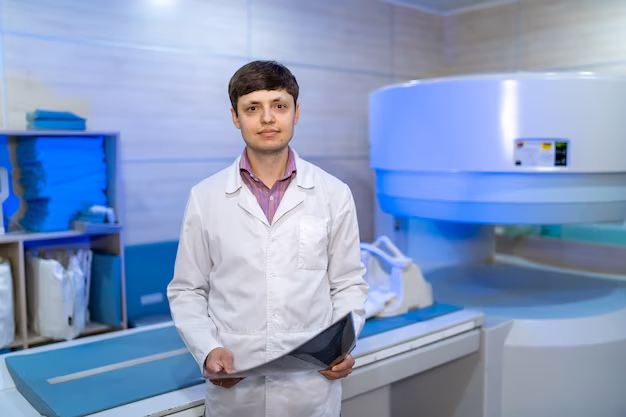Understanding Radiation Treatments for Prostate Cancer: What You Need to Know
When prostate cancer is diagnosed, a deluge of questions and emotions can overwhelm patients and their families. One of the most common queries revolves around treatment options, specifically radiation therapy. How many treatments are required? What does the process entail? And what factors influence the duration and approach?
This article delves into these questions, offering a comprehensive and reader-friendly overview of radiation treatments for prostate cancer.
How Radiation Therapy Works
Radiation therapy utilizes high-energy rays to target and destroy cancer cells in the prostate. It is a non-invasive treatment that can be tailored to each individual's needs. Radiation aims to shrink tumors, eliminate cancerous tissues, and deliver effective results.
Types of Radiation Therapy
There are two main types of radiation therapy used for prostate cancer:
External Beam Radiation Therapy (EBRT): This is the most common type of radiation therapy, where a machine directs radiation beams to the prostate cancer from outside the body. It is performed over several sessions.
Brachytherapy: Also known as internal radiation, this approach involves placing radioactive seeds directly into or near the prostate. This can be a one-time procedure or may require a few sessions, depending on the type used.
How Many Treatments Are Typically Required?
The number of radiation treatments for prostate cancer varies greatly and depends on multiple factors such as the stage of cancer, the type of radiation used, and the individual treatment plan.
External Beam Radiation Therapy (EBRT)
- Standard Schedule: Traditional EBRT regimens may require 5 sessions per week over several weeks, generally spanning around 7-9 weeks.
- Hypofractionated Therapy: This involves larger doses over a shorter time, typically 4-5 treatments per week for 4-5 weeks.
- Stereotactic Body Radiotherapy (SBRT): Offers a more condensed schedule with higher doses in about 5 treatments or less over one or two weeks.
Brachytherapy
- Low-Dose-Rate (LDR) Brachytherapy: Often a single procedure where radioactive seeds are permanently implanted into the prostate.
- High-Dose-Rate (HDR) Brachytherapy: Typically involves a few sessions of temporary implantation to administer high doses of radiation over a short period.
Factors Influencing the Number of Treatments
There are several patient-specific factors and medical considerations that influence the number of radiation treatments, including:
- Stage and Grade of Cancer: Advanced cancers or aggressive types might require more intensive radiation schedules.
- Overall Health and Age: Patients’ health conditions and age often dictate more or less cautious treatment approaches.
- Prostate Size: Larger prostates might necessitate a more extended treatment plan.
- Concurrent Treatments: Sometimes radiation is paired with hormone therapy, potentially affecting the timeline or regimen.
Weighing the Benefits and Risks
Radiation therapy can offer significant benefits, such as effectively managing cancer, reducing symptoms, and the possibility of curing the disease in early stages. However, like all treatments, it carries risks and side effects.
Common Side Effects
- Urinary Issues: Including frequency, urgency, or discomfort.
- Bowel Problems: Such as diarrhea or rectal soreness.
- Sexual Function: Potential impact on libido or erectile function.
- Fatigue: Often reported during or after treatment.
Long-term Considerations
Understanding potential long-term effects is crucial when considering radiation therapy. These might include persistent urinary symptoms or changes in sexual health, and sometimes, rare complications like radiation-induced secondary cancer years post-treatment.
Preparing for Radiation Therapy
Entering into radiation therapy requires mental and physical preparations. Below are tips to help navigate the journey:
- Consult Thoroughly with Specialists: Discuss treatment options, expected outcomes, and side effects with oncologists.
- Adopt a Healthy Lifestyle: Focus on a balanced diet, exercise, and stress management to fortify the body against side effects.
- Develop a Support System: Engage family, friends, and support groups to bolster emotional and logistical support.
Life After Treatment: Monitoring and Recovery
After completing radiation therapy, focusing on recovery and ongoing monitoring is crucial:
Follow-Up Care
Regular check-ups with your healthcare provider ensure that the cancer remains in control and any long-term side effects are managed efficiently.
Lifestyle Adjustments
- Physical Activity: Engage in regular exercise to rebuild stamina and enhance mood.
- Nutrition: Maintain a balanced diet to support overall health and recovery.
Emotional and Psychological Support
Many patients benefit from psychological counseling or support groups to help process the emotional aftermath of cancer treatment.
Final Insights
Navigating the journey of radiation therapy for prostate cancer involves understanding the treatment landscape, considering the personal and medical factors influencing the number of treatments, and preparing adequately for the process. Always consult healthcare providers to tailor the best approach for your circumstances.
🌟 Key Takeaways 🌟
- Radiation Types: Choose between EBRT and Brachytherapy. Sessions can range from a few to several weeks based on type and technique.
- Factors: Treatment varies by cancer stage, overall health, and prostate size.
- Preparations: Include adopting a healthy lifestyle and building a support system.
- Side Effects: Be aware of common issues like urinary, bowel, and sexual function changes.
- Post-Treatment: Ongoing monitoring and recovery is essential, complemented by a focus on emotional health.
This comprehensive look empowers patients with the necessary understanding to discuss with their medical team, ensuring an informed pathway towards managing prostate cancer with radiation therapy.

Related Articles
- Are Breast Cancer Lumps Painful
- Are Chills a Sign Of Cancer
- Are Colon Spasms a Sign Of Cancer
- Are Lytic Lesions Always Cancer
- Are Polyps Cancer
- Can a Blood Test Detect Cancer
- Can a Ct Scan Detect Cancer
- Can a Dexa Scan Show Cancer
- Can a Gastric Emptying Scan Show Cancer
- Can a Lung Biopsy Cause Cancer To Spread